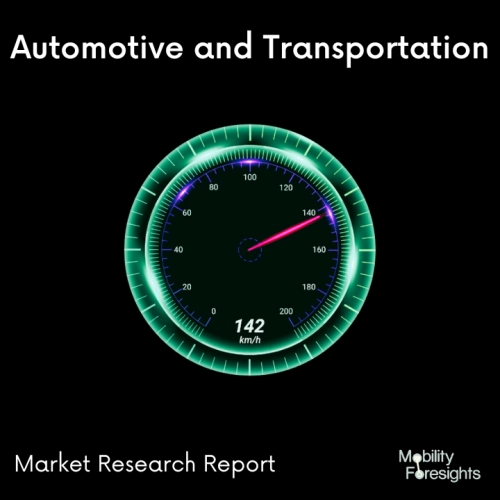
- Get in Touch with Us

Last Updated: Apr 25, 2025 | Study Period: 2024-2030
Loud sounds have been among the most irritating aspects of working in an office setting. Whenever acquired as new, electric vehicles are now reasonably priced. That brings with it the anticipation of a wonderful ride. Noise-cancellation technologies, which work by responding to the sounds around the car, is the dampening material used in EVs.

The technique examines the acoustic signals that are generated. Peaks and troughs are found in sound waves. When noise-cancellation technology recognizes acoustic waves, it generates a new pattern that is diametrically opposed to the original.
| S No | Overview of Development | Development Detailing | Region of Development | Possible Future Outcomes |
| 1 | Musk says FSD will automatically change vehicle height and suspension damping | Elon Musk, the CEO of Tesla, claimed that perhaps the EV maker's self-driving application will automatically adjust the suspension height and damping level. | Global | This would enhance better Technological Controls |
| 2 | Bosch Electric Car Conversion kit launched in India | The eAxle module is space-efficient, offers cutting-edge driving dynamics and damping, and can be easily and quickly fitted into a variety of vehicle configurations. | Global | This would enhance better Technological Controls |
| 3 | The latest launched GMC Hummer EV Has Horsepower with new damping controls | The Hummer's ride quality is exceptional, thanks to adaptive dampers that adjust the amount of dampening offered on different types of terrain and at varying speeds. | Global | This would enhance better Technological Controls |
| 4 | Optimal Damping: Continental Develops Bearing Elements for Electric Vehicles | Finally, Continental's custom engine mounts aid drivers and passengers by effectively insulating and dampening vibrations and noise. | Global | This would enhance better Technological Controls |
| 5 | Mercedes-Benz Vision EQXX electric-car concept hits 1,008-km milestone | Its ribbon-candy-like fibreglass rear springs felt less of a throwback than the exotically tapered design, without the adaptive damping and exotic suspension of the larger EQE and EQS sedans. | Global | This would enhance better Technological Controls |
The Global Electric Vehicle Damping Material Market accounted for $XX Billion in 2023 and is anticipated to reach $XX Billion by 2030, registering a CAGR of XX% from 2024 to 2030.
With the development of all-electric car makers such as Tesla and Rivian, as well as long-established, well-known OEMs such as Volkswagon and GM switching to EVs, a new trend has emerged.
That is, without the sound of an internal combustion engine producing enough noise, customers are already worrying about additional noises created by the roadway, mechanical systems, and, in general, anything noisy entering the vehicle's interior.
Intertronic Gresser GmbH is a leading mobiliser of the Mobility solutions involving damping requirements in the market. The organisation invented a revolutionary electricity-generating suspension technology for electric and hybrid vehicles.
To accomplish this, the regenerating system used connected linear converters to convert a higher proportion of the mechanical energy from the lateral suspending movements, as well but that gathered from the body acceleration, into power.
An electrically operated mechanically linked linear generator dampens vibrations while also generating electricity through opposing inductive pressures.
Sika Systems is part of the component manufacture trending companies in the current industry. The one feature of electric cars that is sometimes neglected is that they are typically bulkier over their gasoline-powered equivalents, owing to the batteries platform's mass.
As a result, Sika has created multi-layer dampening devices that cover a broad frequency spectrum. Sika products can also have three to five times the damping qualities of fairly low damping materials like multilayer, magnetic bitumen, or sprayable solutions of uniform density.
| Sl no | Topic |
| 1 | Market Segmentation |
| 2 | Scope of the report |
| 3 | Abbreviations |
| 4 | Research Methodology |
| 5 | Executive Summary |
| 6 | Introduction |
| 7 | Insights from Industry stakeholders |
| 8 | Cost breakdown of Product by sub-components and average profit margin |
| 9 | Disruptive innovation in the Industry |
| 10 | Technology trends in the Industry |
| 11 | Consumer trends in the industry |
| 12 | Recent Production Milestones |
| 13 | Component Manufacturing in US, EU and China |
| 14 | COVID-19 impact on overall market |
| 15 | COVID-19 impact on Production of components |
| 16 | COVID-19 impact on Point of sale |
| 17 | Market Segmentation, Dynamics and Forecast by Geography, 2024-2030 |
| 18 | Market Segmentation, Dynamics and Forecast by Product Type, 2024-2030 |
| 19 | Market Segmentation, Dynamics and Forecast by Application, 2024-2030 |
| 20 | Market Segmentation, Dynamics and Forecast by End use, 2024-2030 |
| 21 | Product installation rate by OEM, 2023 |
| 22 | Incline/Decline in Average B-2-B selling price in past 5 years |
| 23 | Competition from substitute products |
| 24 | Gross margin and average profitability of suppliers |
| 25 | New product development in past 12 months |
| 26 | M&A in past 12 months |
| 27 | Growth strategy of leading players |
| 28 | Market share of vendors, 2023 |
| 29 | Company Profiles |
| 30 | Unmet needs and opportunity for new suppliers |
| 31 | Conclusion |
| 32 | Appendix |